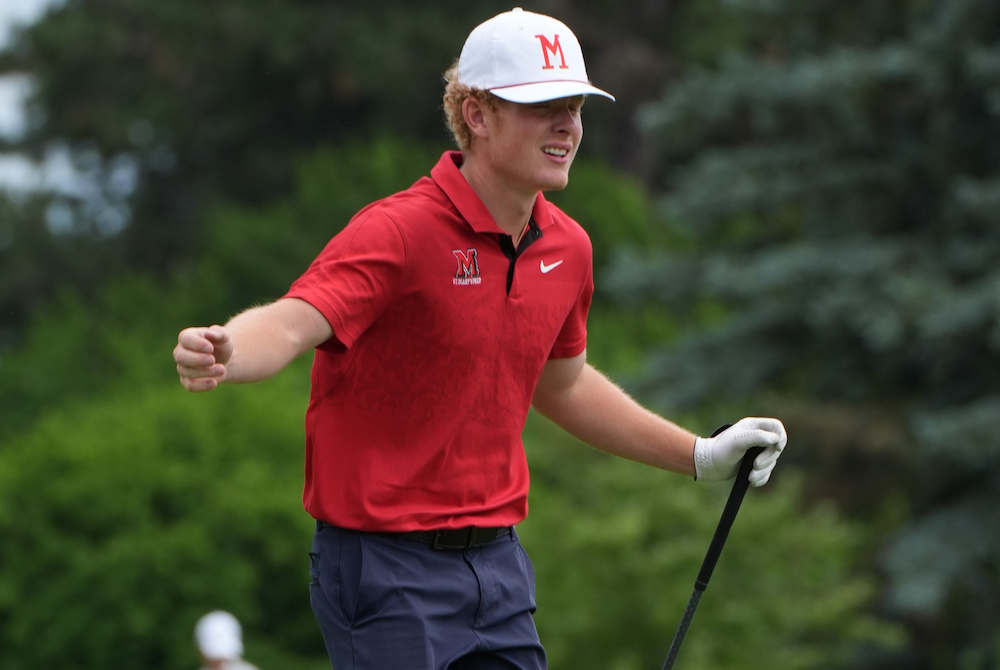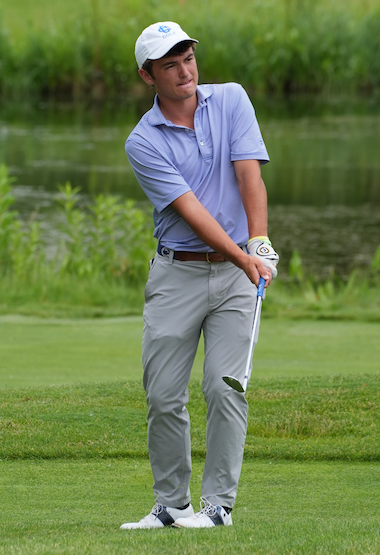
Keep on Coaching
February 1, 2013
By Geoff Kimmerly
Second Half editor
A few weeks ago, I finally got my first chance this season to watch a friend coach his basketball team. After guiding some others at the lower levels, this is his first time running the varsity – something he wasn't sure he wanted to do with a 1-year-old just learning to walk, but a challenge he ended up taking on to the benefit of all those involved.
Simply put, he’s good. I've seen a lot of teams and a lot of coaches over the past 15 years, and although I wouldn't know much of what to do if I were walking the sideline, I felt pretty qualified in telling him I was impressed – even if he didn't buy that I was offering an unbiased opinion. The best news is he’s gone from not sure about this a few months ago to talking about next season.
We know, at least anecdotally, that coaching continues to get more challenging. The time commitment has grown substantially to make running a program a year-round endeavor in a lot of sports at a lot of schools.
That commitment – especially for coaches with children of their own – was a main reason referred to in a New Haven Post-Chronicle story Saturday that noted 23 football coaching openings in Connecticut at one point this offseason. That state has 146 football teams – meaning roughly 15 percent will have new leaders this fall.
And that got me thinking about my friend, about how glad I am he’s given this a shot, and how I've seen so many others either not do so, or not stick around long despite having some pretty nice success.
A study published last winter in Interscholastic Athletic Administration magazine – a product of the National Interscholastic Athletic Administrators Association – noted some predictable results of a study that sought to determine the biggest challenges faced by first-year high school coaches.
The toughest according to the study was balancing the demands of coaching and teaching, experienced by nearly half the respondents – 98 percent of which coached high school teams and 81 percent of which are teachers.
The next six reasons all were noted by at least 30 percent of those in the study – personal fatigue, securing community support, securing and caring for facilities and equipment, parental contact, keeping non-starting players motivated, dealing with schedule interruptions and motivating athletes to achieve consistent, peak performance.
Nothing there is earth-shaking, and most if not all of these challenges are faced by high school coaches regardless of how long they've been in the field. But I got a little more perspective from some of the 32 items that ranked as least challenging to the first-year leaders – keeping in compliance with state and league regulations, dealing with substance abuse issues, teaching sport skills and creating a positive team atmosphere – things that seem most important, and yet appear to be easiest to do. I’m not sure what that tells us – but I think it tells us something.
Click to check out the entire three-page breakdown of the study, plus the researchers’ recommendations to remedy some of what first-year coaches face.
Giving back to Saginaw
I love reading about high-level athletes – like a star-studded group of alums from Saginaw – giving back to where they got their starts.
Pittsburgh Steelers star LaMarr Woodley made a big impact before the start of this school year by donating $60,000 to cover all participation fees for athletes in his former school district. The Saginaw News’ Hugh Bernreuter writes today about how Woodley (Saginaw High), the Philadelphia 76ers’ Jason Richardson (Saginaw Arthur Hill) and former Oakland Raiders standout Stu Schweigert (Saginaw Heritage) have combined to give more than $865,000 back to their home communities.
Bernreuter also mentions the non-monetary contributions of the Golden State Warriors’ Draymond Green (Saginaw High) and former Indianapolis Colts receiver Blair White (Saginaw Nouvel).
Click to read more about it.
Quote(s) of the Week
While rifling through more papers on my desk, I found an article from the Washington Post from Sept. 2011 titled “How high school sports save our schools.” I was drawn to it in part because I spent more than a decade in a newsroom, and it was a piece by a reporter covering education who instead of reporting on school boards and the like, delved into the importance of interscholastic athletics to education as a whole.
He spoke of how participation continues to grow even as resources dwindle, and of data supporting that extracurriculars like sports are more effective than academic classes in teaching leadership, teamwork, time management and “other skills crucial for success in the workplace.” Later, he mentioned a study noting that those who participate in extracurriculars earned more a decade later.
Click here to read the entre piece. These passages struck me most.
“Coaches might be the only faculty members still allowed by our culture and educational practice to get tough with students not making the proper effort. They have the advantage of teaching what are essentially elective non-credit courses. They can insist on standards of behavior that classroom teachers often cannot enforce because the stakes of dismissing or letting students drop their courses are too high. …
“Students do better in activities they choose. If we provide more of them, led by committed adults … that can make a difference. We know the bad news about education. Dropout rates are high. Achievement scores are stagnant. But sports participation is going up, despite pressure to cut it back. Let’s cheer about that and look for a way to draw in more students.”

Second-Round Surge Lands Orchard Lake St. Mary's 1st Finals Victory
By
Keith Dunlap
Special for MHSAA.com
June 8, 2024
EAST LANSING — Tom Brecht had waited 28 years for this moment, but he could think about only one thing in the immediate aftermath of the Saturday’s Lower Peninsula Division 2 Final at Forest Akers West.
“It’s cold,” Brecht said after getting a bucket of ice water dumped on him by his golfers. “I wish it was 90 about degrees out there; then it would be OK.”
It was the first time Brecht had experienced the traditional celebratory bath, which was fitting because it was also the first time he’d experienced a Finals title since taking over as the head coach of Orchard Lake St. Mary’s in 1996.
An athletic program steeped in tradition across many sports, St. Mary’s will now get to hang a championship banner for boys golf after the Eaglets closed with a strong second day to win their first title.
Trailing by one shot after Friday’s first round, St. Mary’s shot four strokes better as a team on the second day for a final total of 603 (304-299), edging runner-up Grand Rapids Christian by one stroke.
The Eagles had entered in fourth place after shooting a first round score of 307, but shot a 297 on the second day. Richland Gull Lake was third at 609.
All of it obviously left Brecht overjoyed and beaming with warmth in spite of the cold water dripping down his back.
“I thought it would come,” Brecht said of winning a state title. “I don’t know how much longer I’ll be coaching – maybe one or two more years. I’m just very thankful and blessed.”
 Leading the way for St. Mary’s was senior Cooper Eaton, who shot a two-day score of 144 (71-73). Sophomore Blaise Król was next with a 147 (74-73), followed by junior Ethan Mukhtar (78-78-156), sophomore Mikey Karwaski (81-75-156) and senior Ben Carroll (82-82-164).
Leading the way for St. Mary’s was senior Cooper Eaton, who shot a two-day score of 144 (71-73). Sophomore Blaise Król was next with a 147 (74-73), followed by junior Ethan Mukhtar (78-78-156), sophomore Mikey Karwaski (81-75-156) and senior Ben Carroll (82-82-164).
St. Mary’s hadn’t won a tournament going into the weekend, but close calls over the regular season turned into a breakthrough at the most important event of all.
“It’s surreal,” Eaton said. “It’s a dream come true. All the guys put it together, and it was our day. We really took care of business.”
Also taking care of business was Grand Rapids Catholic Central senior Will Preston, who like St. Mary’s broke through for the first time in what was his final high school tournament.
Preston was the individual runner-up at the last two Division 3 Finals and a part of Catholic Central’s 2023 team title.
Moving to Division 2 this year, Catholic Central didn’t qualify as a team, but Preston did individually and made good on another opportunity.
“Obviously being runner-up two years in a row sucks,” Preston said. “But you take that experience and do your best to move and keep it coming.”
After a 2-under round of 70 on the first day, Preston shot a 1-under round of 71 to finish at 141, one shot ahead of Bloomfield Hills Brother Rice junior Leandro Pinili and three shots ahead of Eaton.
The last hole for Preston was the par-4 No. 3 hole, and he knew he was two shots ahead teeing off.
He said it didn’t change his strategy of hitting an iron off of the tee, but he sprayed that shot into the rough and had to chip out.
Preston eventually laid three facing a chip shot near the green, but got up and down from there to secure a bogey and the title.
“I didn’t have my best stuff today, actually,” said Preston, who will play in college for Penn State. “But I was able to keep with it and had a couple of key up-and-downs later in the round. Just kept with it when I was struggling.”
PHOTOS (Top) Orchard Lake St. Mary's Cooper Eaton celebrates after a drive Saturday at Forest Akers West. (Middle) Grand Rapids Catholic Central's Will Preston follows a chip. (Click for more from High School Sports Scene.)

